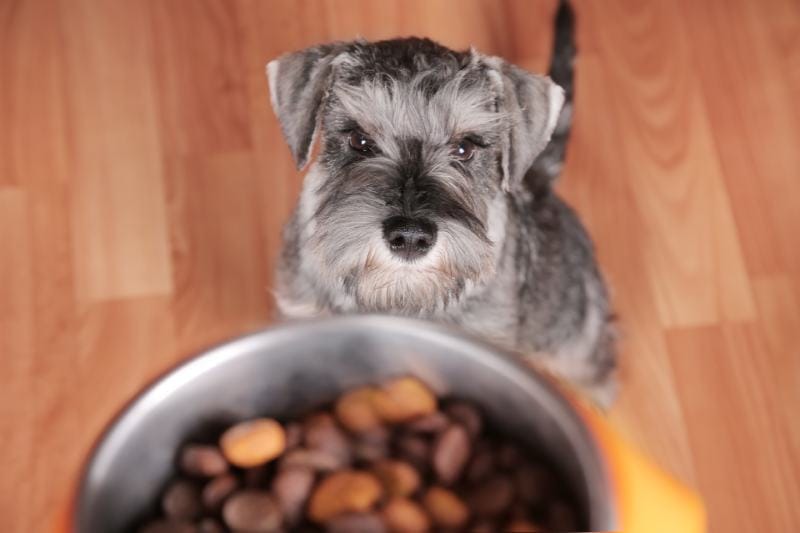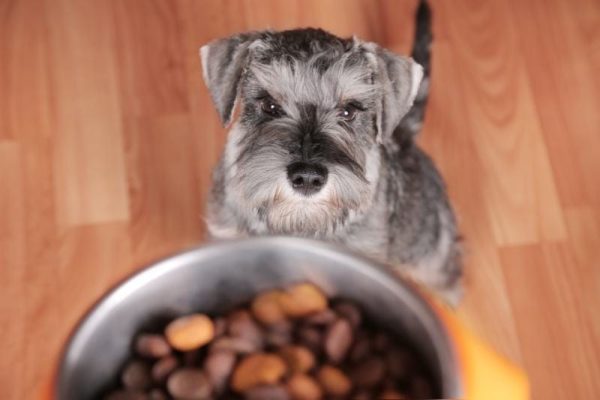Click to Skip Ahead
Canine nutrition can feel like an impossible labyrinth to navigate whether you’re a first-time dog owner or not. There is so much information—and misinformation—out there, making it hard to know exactly what time of day to feed your dog and the appropriate feeding frequency at which to feed them. However, there is no right answer or hard and fast rule for implementing a feeding schedule for dogs. It comes down to your lifestyle and factors like your pup’s health and age.
Read on to learn more about meal timing, scheduling, and frequency for your dog.

Why Implement a Feeding Schedule?
Dogs are creatures of habit that generally prefer regular, predictable schedules. A routine helps provide your pup with a baseline for what they should expect from day-to-day and establishes you as their pack leader. Having an established routine in place may even help your dog cope if there are changes within the household that would otherwise upset their day (e.g., the arrival of a new baby or pet sitter).
Scheduled meals not only provide structure to your pet’s day, but they can also help with potty training puppies, as you’ll have a good sense of when you’ll need to take them outside to go to the bathroom after a meal. Puppies typically need to relieve themselves within 10 to 15 minutes of finishing their meals. When you “link” a potty break with a meal, you can predict when your puppy will need to go outside and allow them to associate urges to eliminate with being in the appropriate place to do so. This is an essential step during house training.
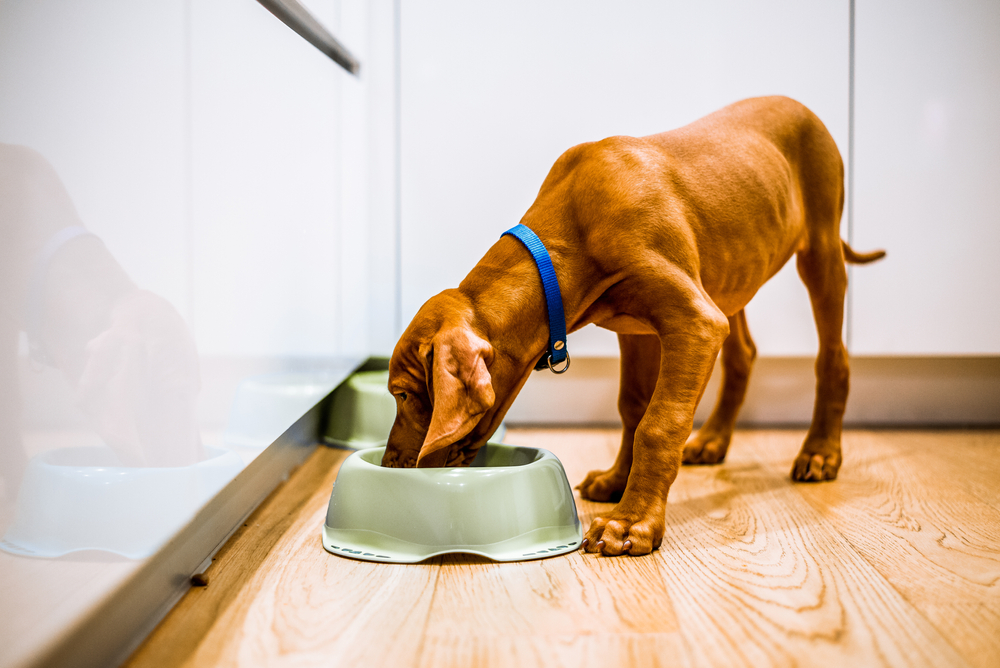
How Many Times a Day Should a Dog Eat?
Though there are no hard and fast rules regarding the frequency of meals, twice daily is typically the recommended place to start.
Most dog owners fall into a routine of feeding them on a schedule that works with their lifestyle. For example, let’s say you get up at 5:30 am to begin your day. You can feed your pup meal one at that time, and when you walk in the door at 5:30 pm, 12 hours will have passed since your dog’s breakfast, and they’ll be ready for dinner.
However, if you work from home, you can easily implement a thrice-daily feeding schedule that coincides with the meals you’ll eat. Your dog’s meal routine will rely heavily on what your day-to-day life looks like.
A dog’s stomach structure is like that of a human in that once it is filled, it will empty within a few hours when the food makes its way through to the small intestine. Approximately eight to ten hours after eating, your pup’s stomach will start sending signals to the brain that stimulate a hunger response.
What Other Factors Can Determine Feeding Frequency
You already know that your lifestyle and personal schedule can impact how often you feed your dog, but other extenuating circumstances impacting frequency exist.
- Age. Young puppies need more frequent feedings as they’re growing rapidly and need a lot of energy to facilitate this growth. Additionally, frequent meals can prevent hypoglycemia (low blood sugar). Three or four daily feedings can help your puppy digest their meals more easily and provide them with the consistent energy level they need to explore the world around them.
- Health. Dogs with health conditions or specific dietary needs may need specialized feeding schedules.
- Physical Activity. Dogs that are very active will burn more energy during the day compared to lower-energy dogs. Their feeding frequency will be different from that of more sedentary dogs.
- Breed. Large dog breeds often require more frequent feedings than their medium- and small-breed counterparts. This is because they may be prone to gastric dilatation-volvulus, a life-threatening condition that can occur when a large breed dog eats too quickly, though many factors are likely involved. Bigger dogs, therefore, may do better with smaller, more frequent meals throughout their day.
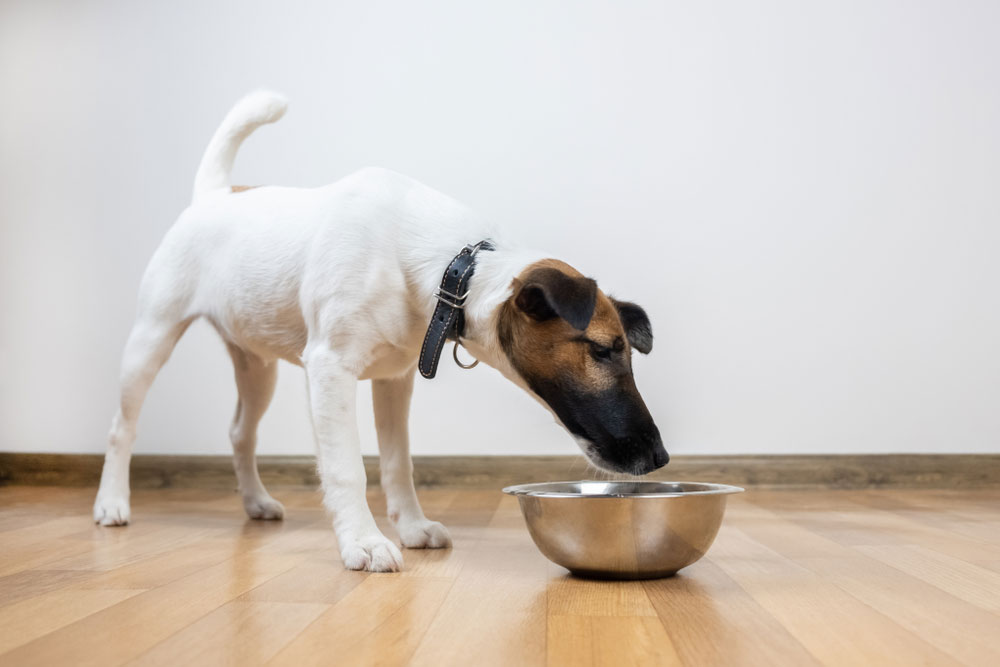
What About Once-Daily Feedings?
Studies suggest that a once-daily feeding could have beneficial health outcomes for dogs. The Dog Aging Project has been collecting data on thousands of dogs of varying ages, breeds, and sizes for several years. The data suggests that adult dogs fed just once daily often score better across several health indicators than dogs fed more often. They had lower mean scores on the cognitive dysfunction scale and reduced odds of developing dental, orthopedic, kidney, and gastrointestinal disorders.
However, it is important to remember that correlation does not equal causation. According to VCA Animal Hospitals, feeding a single meal per day is associated with an increase in the risk of developing GDV1.
Watch Your Portions
Use a measuring cup or kitchen scale to ensure your dog is getting the proper portion at each meal. Overfeeding can cause a host of issues, including obesity and all its related health conditions. If you’re not sure how much your dog needs, the label on the food packaging can provide a good jumping-off point. You can also speak to your veterinarian for personalized suggestions. They’ll take your dog’s activity level, health status, age, and breed into account when making their recommendations, giving you a much better idea of exactly how much your pup should be eating, depending on their life stage.
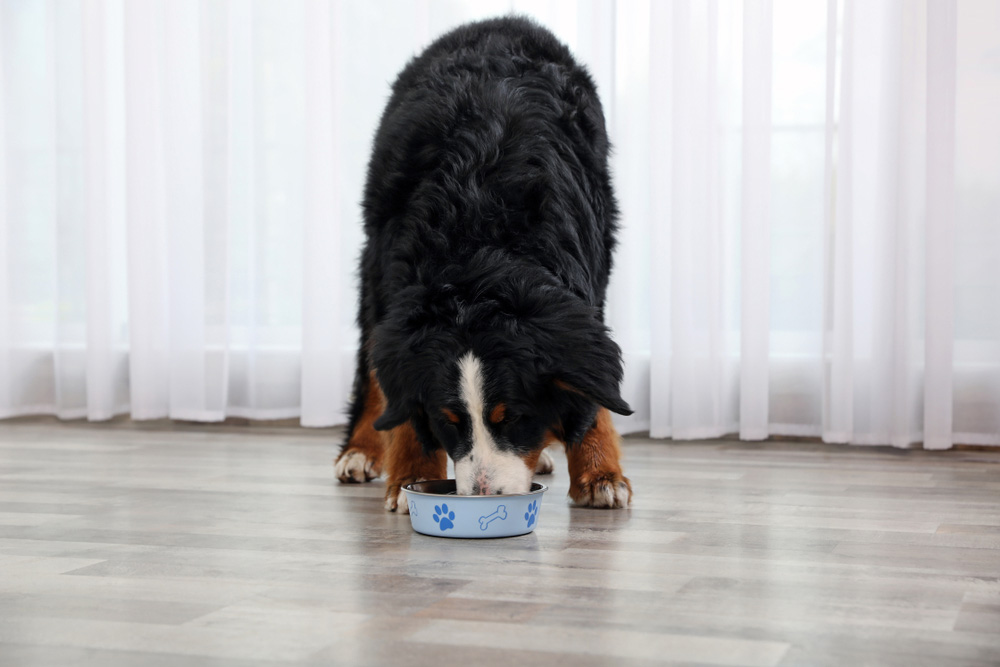

Final Thoughts
How much you feed your dog and the frequency of each feeding is far more important than the time of day you feed them. If you choose to go with twice daily feedings, try to feed them 12 hours apart. However, feeding them once or thrice daily may work better with your schedule.
The best time to feed a dog may simply be when it works in your schedule. However, you should take into account your dog’s breed, age, and health status when determining the perfect feeding routine for them.
Featured Image Credit: Maximilian100, Shutterstock

